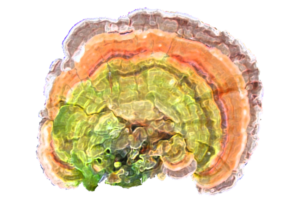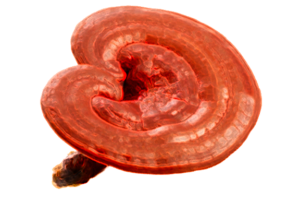Danka Matijašević, Milena Pantić, Božidar Rašković, Vladimir Pavlović, Dunja Duvnjak, Aleksandra Sknepnek, Miomir Nikšić
Abstract
The antibacterial activity of methanol extract obtained from fruiting body of industrially grown basidiomycete Coriolus versicolor was examined. The Minimum Inhibitory Concentration (MIC) values against various bacteria ranged from 0.625 to 20 mg mL-1. C. versicolor expressed bactericidal activity against both Gram-positive and Gram-negative bacteria. The growth curves of Staphylococcus aureus and Salmonella enterica serovar Enteritidis, measured at 630 nm, and confirmed with macrodilution method showed that the obtained extract could inhibit the growth of tested bacteria. Scanning electron microscopy (SEM), transmission electron microscopy (TEM), and the loss of 260-nm-absorbing material were used to examine the ultrastructural changes in bacteria induced by the extract. When S. aureus was exposed to the MIC of C. versicolor, elongated and malformed cells were observed by SEM, while S. Enteritidis treated cells appeared shorter and aggregated with ruptured cell walls. TEM revealed the formation of non-membrane-enclosed bodies and depleted inner content of S. aureus. Larger and irregular periplasmic space and deformed and scattered components of the cell envelope were observed in treated S. Enteritidis. The loss of 260-nm-absorbing material indicated that the disruptive action of the extract on cytoplasmic membrane was more pronounced in S. aureus than in S. Enteritidis treated cells. The UV and FTIR spectrophotometric analyses revealed diverse composition of C. versicolor extract and high content of total phenolics. Altogether, mushroom extracts could be used to develop nutraceuticals or drugs effective against pathogenic microorganisms.
Reference:
Front Microbiol. 2016; 7: 1226


